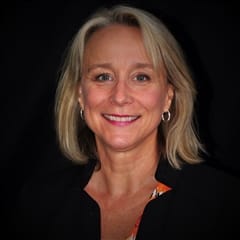Attending a Keystone Symposium in Colorado has always been on my bucket list. This year, Keystone Hematopoiesis (April 21-23) was held virtually so I was able to attend online. This conference focused on the biology of normal and malignant hematopoiesis (i.e., the production of components of the blood), including topics on hematologic malignancies like leukemia. Each day was packed with 3 hours of content followed by a 4-hour break and then another 3-hour segment in the evening. Alas, no hitting the slopes between the morning and evening sessions as one might usually do during a Keystone meeting, but the speakers and their presentations provided enough excitement.
Mission Bio was a co-sponsor for the event, as our Tapestri Platform is being utilized to advance knowledge at a single-cell level in many hematology-focused research labs. For instance, several labs are interested in detecting the co-occurrence of mutations in individual cells — something that only Tapestri can determine via single-cell DNA sequencing.
In listening to the talks during the tracks on Hematopoiesis during Stress and Aging, Microenvironment and Signaling, Hematopoietic Stem Cell Biology and Development, and Hematological Malignancies: Biology and Therapy, many researchers are using single-cell analysis to look at transcriptional level changes using RNASeq. I couldn’t help but wonder what additional insights might be revealed by running those same samples on the Tapestri DNA/Protein sequencing platform to understand the mutational and immunophenotype of the cells in the study.
Dr. Ross Levine from MSKCC utilized our platform to assess the Role of Mutations in Epigenetic Regulators in Clonal Hematopoiesis and Evolution to AML. In this talk, he explained how following individual mutations may not be the best way to monitor for relapse, as a patient may harbor mutations in the several CHIP (clonal hematopoiesis of indeterminate potential) genes that are present, but not influencing the disease state.
Therefore, it is necessary to look at the occurrence of mutations in genes such as TET2, DMNT3A, IDH1/IDH2 and to understand the co-occurrence of the mutations and in which cellular compartment they reside. This is the type of work the Tapestri instrument is made for. By combining DNA mutational analysis and immunophenotyping, one can simultaneously measure mutational co-occurrences and identify the cell type/stage of maturity in the same cells. Moreover, Tapestri can process thousands of cells per sample and even identify very rare clones. In addition, one can detect the specific zygosity of genes such as TP53 and understand if mutations are dominant or subclonal. I was lucky to speak to Dr. Levine during the Keystone Symposium about his recent multi-omics work on AML. You can read more about our discussion here.
Dr. Ravi Majeti from Stanford and a user of the Tapestri Platform co-chaired the session on Hematologic Malignancies: Biology and Therapy with Dr. Citriona Jamieson from the University of California San Diego. She gave a wonderful presentation on Innate Immune Deaminases Fuel Pre-Leukemia Stem Cell Malignant Transformation in which she used the Tapestri Platform to track JAK2/DNMTA3a mutations in clonal populations.
Finally, a networking session was hosted on Friday afternoon in which participants could virtually sit with other researchers from around the world to discuss their particular research in hematology. I particularly enjoyed speaking to Dr. Bamisaye from the University of Ibadan in Nigeria using locally sourced food extracts to combat acute myeloid leukemia (AML).
It was also interesting to hear how Dr. Girard, a post-doc at UCLA, was using Drosophila models to learn more about myeloid malignancies. A researcher in Dr. Klco’s lab from St. Jude discussed the development of mice pediatric tumor models of AML and using single-cell DNA sequencing. I love that I have one of the most interesting jobs in science as a Translational Science Liaison in that I get to speak to others regarding such broad research areas every day.
Next up will be week 2 of AACR on May 17-21 and I look forward to seeing you all there!











